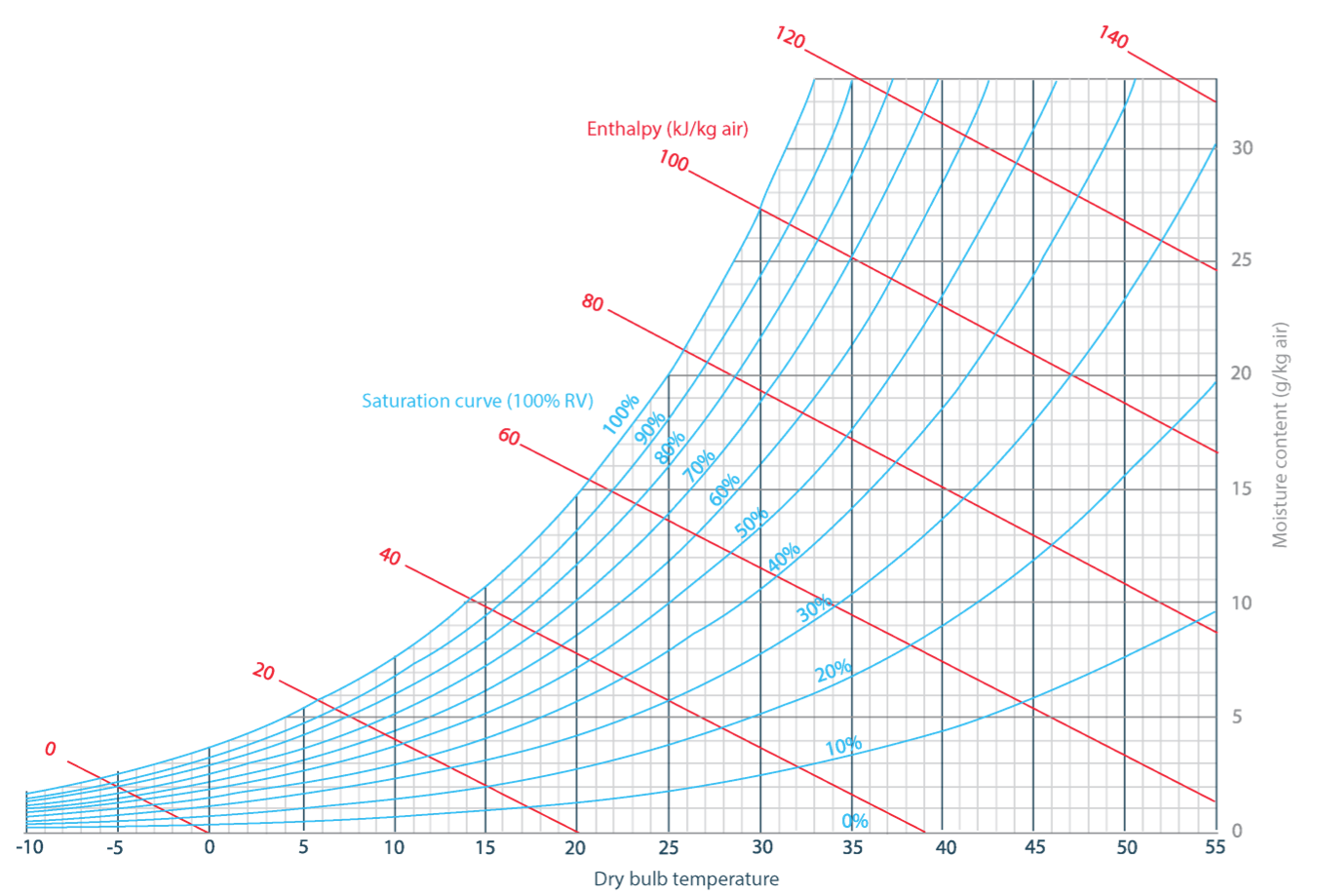The Vapor Pressure Difference
The term VPD is become commonplace among the controlled environment agriculture community for good reason – it is one of the keys to controlling plant health and vigor. In order to maximize the genetic potential and overall yield of crops, cultivation managers must first optimize a plants water uptake. Several variables determine the flow of water and nutrients through plants, but arguably the most important is VPD. Not Vapor Pressure Deficit, but the other VPD: Vapor Pressure Difference. For the rest of this article, the D in VPD will stand for “Difference”. In this post, we’ll explain the distinction and provide some resources showing how to calculate VPD – with precision.
The D in VPD
Many Vapor Pressure Deficit charts have a significant flaw: they assume leaf temperature is equal to air temperature. While this removes a step from the equation, it seldom is accurate in practice. When leaf surface temperature changes, VPD changes. This is why we want to ensure the actual Difference is calculated. VPD indicates stomatal conductance: how open the stomata are on the plant leaves, and how readily they allow water to move through the plant. When leaf temperature varies, even by a couple degrees, the VPD can fluctuate significantly, steering generative phases towards vegetative or vice-versa. Different cultivars have varying ranges of acceptable VPD levels, so be sure to consult your neighborhood agronomist for specifics.
Low VPD, Cause and Effect
Low VPD means low pressure and a low flow rate of water (and nutrients) from the substrate to the roots, through the xylem, and out through the stomata (a process called evapotranspiration which deserves a post to itself). During propagation of cuttings this is the goal: water levels within the plant are preserved until roots develop. However, once plants are established, a low VPD lessens calcium uptake, weakening stomatal growth and subsequent plant vigor. A low VPD can also indicate that the leaf/plant temperature is approaching or below the dew point. This can cause condensation to form on leaves, flowers, and fruits, causing fungal pathogens such at powdery mildew and botrytis.
High VPD, Cause and Effect
High VPD causes stomata to close. This slows the plants self-regulating route of water uptake while pressure builds to the point where water is forced through the closed stomata. This leads to less available water within the plant and an increase in drought stress. Water moves through the plant too quickly, causing an EC spike in the medium as salts precipitate, and leaf wilting as they cease to act as ballasts and wilt. The resilience of crops to a high VPD is, of course, determined by species and variety. A decreased tolerance to high VPD levels also is the result of suboptimal Calcium levels within the plant tissue. As mentioned earlier, this is a result of too high a VPD during initial growth, but can also point to an inadequate fertigation regiment.
How to Calculate VPD?
To put it as simply as possible, VPD = VP(leaf) – VP(air).
The calculation for VPD only requires three variables, leaf surface temperature, air temperature, and relative humidity. The calculator we recommend is part of the psychrometric calculator available here. The calculator is a tool for managing a broad range of quantifiable greenhouse data. Please note Riococo has no affiliation with the host of the previous link, we’re just a fan of their work! For those of you who want to dig into the physics behind it all, check out a white paper titled On the Computation of Saturation Vapor Pressure and also the textbook Principles of Environmental Physics. Both are available for free by following the links.
Proper VPD should be an integral part of any optimized production facility’s SOPs. The consistent properties of a high quality substrate are as well. Learn more about how Riococo helps greenhouse fruit and vegetable growers worldwide improve labor costs and irrigation efficiency requesting a quote or by clicking any of the social links below.

